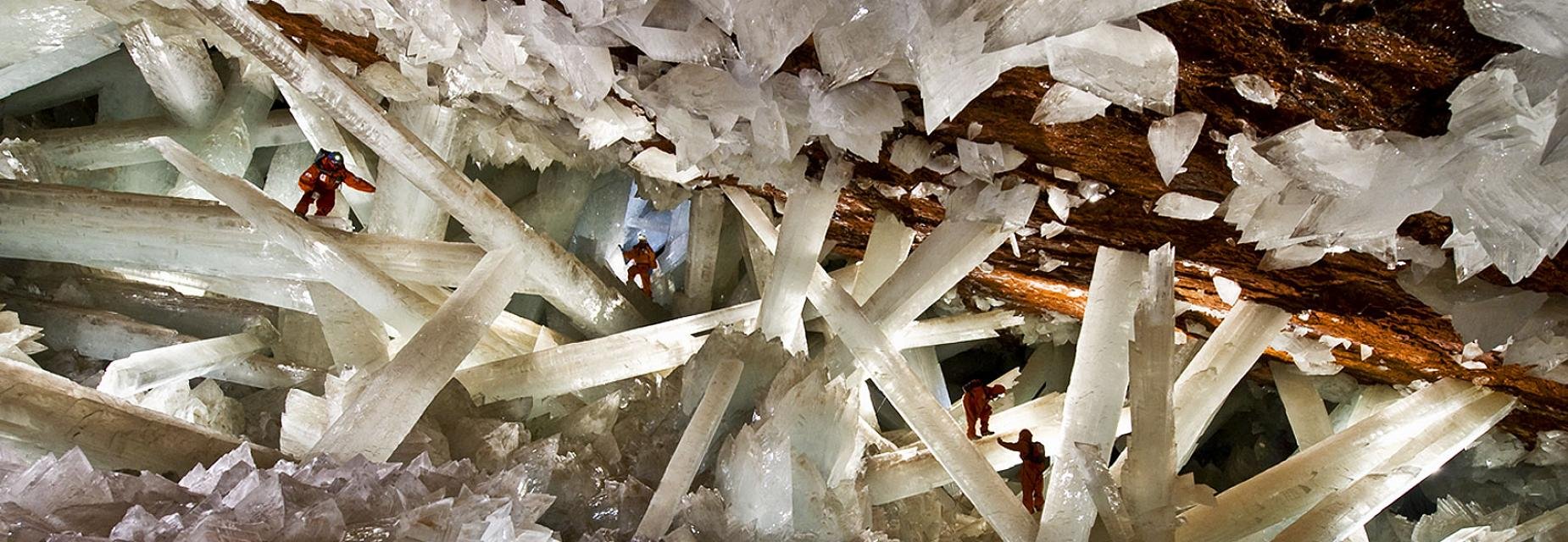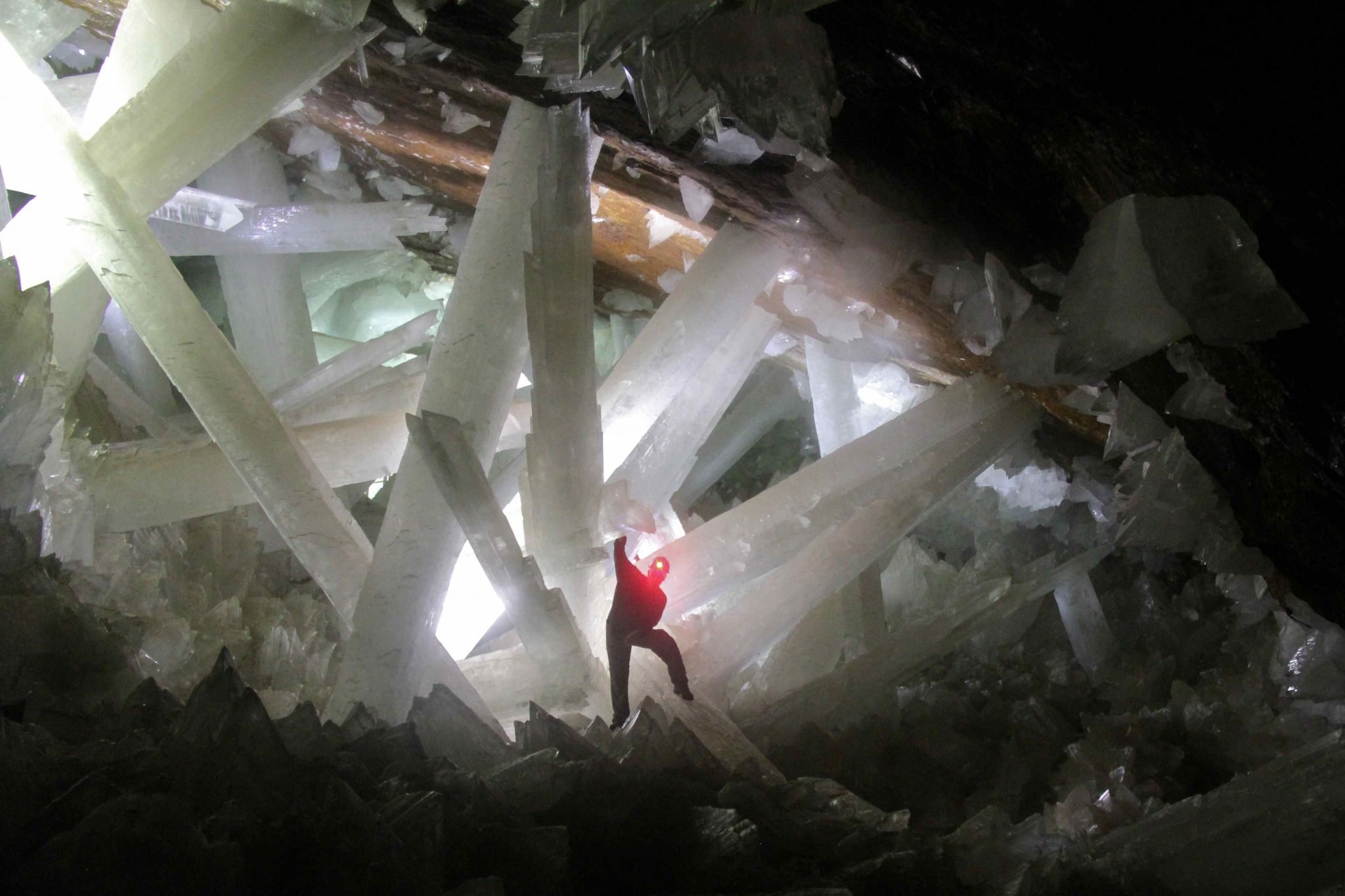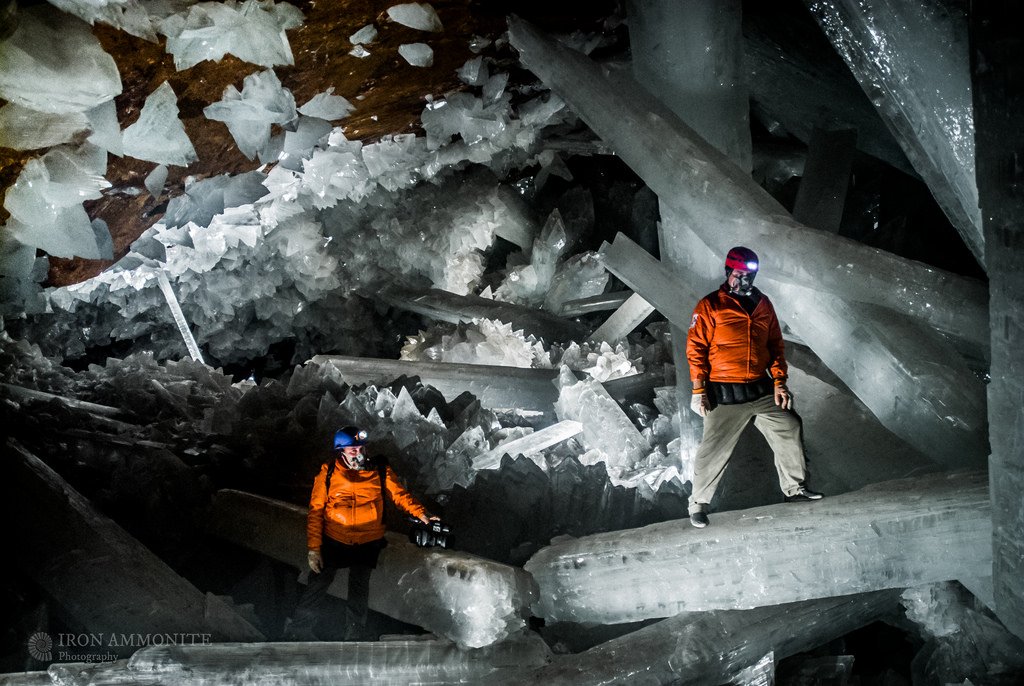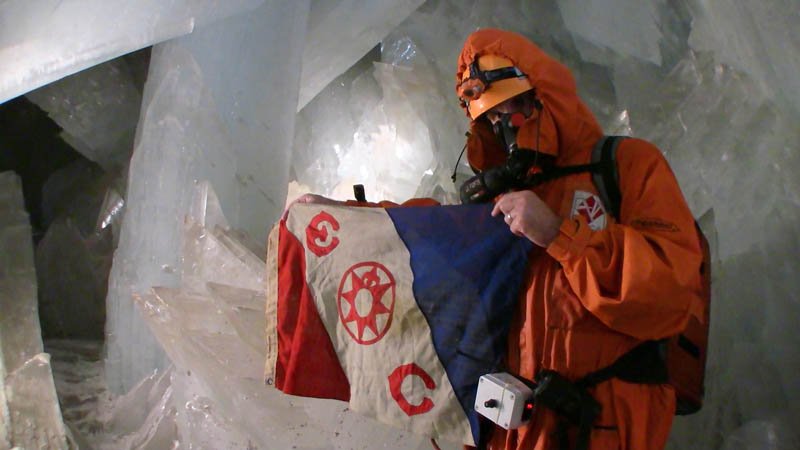Hello nature lovers! Here we are again in a new post on weird phenomena!
Most of you will agree that crystals are cool. Big crystals are cooler. But GIANT crystals... are freaking awesome!

(Image source: thousandwonders.net)
Some say the bigger, the better. That applies in the Cave of Crystals in Mexico where selenite (one crystal form of gypsum) pillars, as big as 36-feet (12-meter) high, lay hidden 900 feet (300 meters) beneath the ground (That's right, gyspum, that powder used in drywall constuction). Those pillars can weigh up to 50-55 tons.
Formed on limestone rock, the cave has the shape of a horse-shoe and measures up to 30 feet (10 meters) in width and 90 feet (30 meters) in length. This outworldly spectacle was discovered in 2000, under the silver, zinc, and lead mines of Naica town (Chihuahua, Mexico). Ιn 1910 miners had already discovered a first cave in more shallow depths (400 feet - 120 meters). They named it the "Cave of Swords" - "Cueva de las Espadas" due to the abundancy in 3-feet (1-meter) long selenite (gypsum) "daggers" that protruded its walls.
Some 90 years later (in 2000) the mining company decided to go to deeper grounds in the Naica mineral "cellar", which they feared would flood the mine with underground water. But the two excavators that were assigned with the exploration were in for a bigger (literally) surprise. When they entered the deeper cave they faced those gigantic columns of gypsum in a landscape where you'd expect to find giant underground witches performing dark crystal magic. The only crystal magic inside the cave though was mother nature's and it's definitely not dark (perhaps a bit lethal, but extraordinary as always).
Up to now we count 5 caverns since two smaller ones were discovered in 2000, Queen’s Eye Cave and Candles Cave, and another one, Ice Palace, in 2009. Geologists believe that they are not the only underground "crystal vaults" in the area.

(Image source: thousandwonders.net)
Slow cooking
Naica mountain was formed about 26 million years ago due to volcanic activity and hosts these caves in its "guts". The molten lava [situated approximately 2-3 miles (3-5 kilometers) underneath the cave] contained high concentrations of anhydrate (the dehydrated form of gyspum - yes, as waterless as it can get). Anhydrate survives only in extremeley high temperatures and when it meets with cooler water (and by cooler we mean below 136 °F - 58 °C) it can absorb it and turn into gypsum. If this happens in a loooong period of time, the gypsum will crystallize into selenite.
The secret for the recipe is temperature! As we said, anhydrate needs heat. Groundwater was being heated up by the scorching magma chamber below the cave. When temperatures started dropping and reached the safe-limit of 136° Fahrenheit (58° Celsius), anhydrate started to dissolve and release sulfate and calcium in the water. Over the course of centuries selenite gypsum crystals began to form and grow to those "monster" crystals we see today.
When human activity de-flooded the cave, the process was abruptly stopped. If we had let it "cook" for longer, the columns would be even more massive!

(Image source: flickr.com)
Lethal beauty
Beauty can kill you without trying too hard. Staying inside the cave will lead you to death by drowning without dipping you in water. Humidity levels within the cave are extremely high (almost 100%), which means that your lungs would get filled with water vapor shortly after you'd take several breaths. This vapor would then condense into water, because your lungs would be a lot cooler than the surrounding 50° Celsius, and you would soon be gone, drowned and roasted (15 minutes would be enough).
These extremely dangerous conditions make the scientists' work very difficult. They cannot enter the cave without special cooling suits and they can't stay inside it for longer than half an hour to 45 minutes. Higher brain functions soon cease under extremely hot temperatures, humidity makes the ground slippery and raises the risk of a fall into deep pits or getting wounded by sharp crystals.
The storm-chaser guy
If you remember our friend, George Kourounis, from some posts of the past, I should tell you that he didn't miss the chance to visit this remarkably dangerous but indisputably gorgeous place. You can read his expedition story on his personal webpage.

(Image source: stormchaser.ca)
Extremophiles, found in every nook and cranny
In another attempt of life to surprise us, tiny dormant bugs have been discovered to endure such harsh conditions. In 2017 a team of scientists led by Penelope Boston (director of NASA's Astrobiology Institute) managed to revive some of the ancient bacteria found within the crystals. They have been living in a dark (photosynthesis is out of the question), extremely hot and humid place, feeding on rock minerals (chemosynthesis) to stay alive. Those sleeping survivors may have been lying there for 10-50,000 years and their genetic image is nothing like we know of. (I just hope they didn't release any ancient curse-virus thing that will reap mankind apart - Somebody's been watching too many disaster movies I guess).

(Image source: telegraph.co.uk)
Studying those super-tolerant forms of life can help scientists, especially astrobiologists, build hypotheses about life on other planets. It is widely presumed that if life existence is possible anywhere else in the universe it would probably be underground, surviving on chemosynthesis . That's why such organisms are of great importance to us.
Can visitors see it?
Unfortunately, the mining process has stopped and the cave is now re-flooded, so you cannot be a witness of this magnificent sight anymore. Maybe in the future action will be taken and re-open it for further scientific study. Note that, in the first cave, Cave of Swords, which was open for tours, some of the crystals were damaged.
We'll be closing with a great video explaining the mystery of the cave:
And in case you have watched the movie, the resemblance cannot remain unnoticed.

(Image source: fanpop.com)
References
nationalgeographic.com_1
nationalgeographic.com_2
atlasobscura.com
wikipedia.org
extremescience.com
crystalinks.com
stormchaser.ca
bbc.com

Thank you for reading today's post! I hope it got you excited enough to follow me, @ruth-girl, for more fascinating phenomena!
If nature's weirdness is your thing, you can check some of the previous articles of this series:
9 - Blood Falls
10 - The Lava Lake
11 - The Toxic Underwater Lake
12 - Underwater Crop Circles
13 - The Spotted Lake
Interested in science? Please, don't forget to check the @steemstem project, a community-driven project meant to promote well-written, high-quality, STEM-related content (STEM as for Science, Technology, Engineering and Mathematics). Join them in steemit.chat for more information.
And for those engaging with education, @steemiteducation is here to join all steemian educators in their common cause of making our job easier, more effective and more fun!
Finally, the greek community of steemit is here and waiting for you to discover it! Follow the @greek-trail for daily doses of good-quality posts by wonderful writers!
Until my next post,
Steem on, people, and keep smiling!


